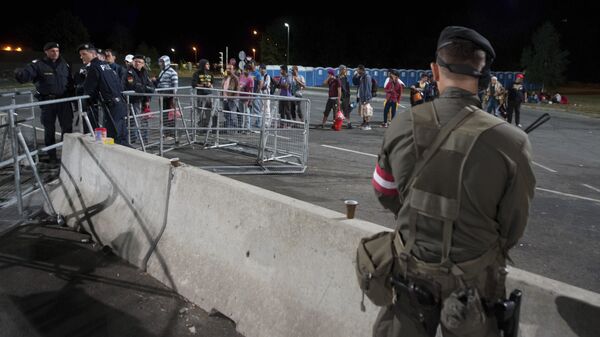Prime Minister Viktor Orban has now insisted that Hungary shouldn't allow a single migrant to enter the country, according to a press release published on the government's official website.
"For Hungary to be capable of achieving anything in the next four years it must not allow in a single migrant, it must defend its border security fence," the press release, paraphrasing comments by PM Orban, reads.
Repeating the same thing over and over again won't do.
— Ronan Maher (@RonanMaher83) March 5, 2018
Most of the migrants are not refugees and have no legal right to be here.
Now is the EU trying impose Muslim Migrant Quotas on Hungary or not?
He also went on to reiterate that his government believes the EU should reimburse Hungary for the construction of its border wall.
"Brussels must pay for its [the border barrier] costs — or at least half of them, which would be 445 million euros (around US$550 million at the current exchange rate.) In addition, he said, the national security risk means that Hungary must exclude from the country everyone who is involved in organizing immigration," the press release continues.
In April, 2017, Hungarian authorities announced the completion of a second border wall with Serbia, spanning 155 kilometers, and featuring thermal imaging cameras to spot migrants in dark conditions.
During a speech at the Hungarian Chamber of Commerce and Industry's economic policy forum, PM Orbán said Hungary can achieve "full employment by 2022" and four percent annual economic growth if it continues "defending itself."
PM Orban's harsh anti-migrant stance has drawn criticism from other EU member states and the EU itself. The UN also branded him as racist over his recent comments about migrants.
#Hungary: Prime Minister Orbán's statement –“We do not want our color… to be mixed in with others”– is clearly racist. To hear it unabashedly expressed by the leader of a modern EU country should outrage every one of us. https://t.co/kYPe8GMTTc #FightRacism #StandUp4HumanRights
— UN Human Rights (@UNHumanRights) March 6, 2018
During the wave of migration into Europe, most migrants initially arrived at Italy or Greece by crossing the Mediterranean Sea with smugglers in small rafts from Libya, before moving inland — crossing through countries such as Hungary and Croatia — to reach Germany, and other nations with migrant-friendly policies and welfare programs.
The Dublin Regulation stipulates that refugees must apply for asylum in the first EU member state they arrive in, though hundreds of thousands of migrants disregarded this rule and continued to travel deeper into Europe.
In 2015, tens of thousands of migrants arrived in Budapest and boarded trains and other forms of public transport to continue their journey to Austria, with many then proceeding to enter Germany.


